Birds on Chinese cultural relics
Flying Birds on Chinese Cultural Relics
Worship and Symbolism from Ancient Times to the Ming and Qing Dynasties
From the ancient times to the Qing dynasties(that is around five thousand years), birds have played a significant role in the religious, cultural, and artistic life of ancient China, symbolizing communication between heaven and earth, harmony with nature, and the freedom of life.
1. Bird Worship and Unearthed Cultural Relics in Ancient Times
In ancient China, bird worship was an important part of primitive religious beliefs, and birds were regarded as messengers connecting heaven and earth, and between humans and gods.
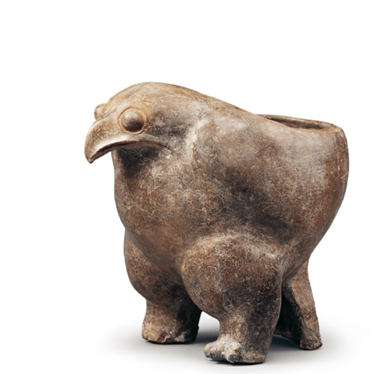
- Eagle-shaped pottery tripod - Yangshao culture
National Museum of China
Neolithic Age. The characteristics of the tripod-shaped object are cleverly integrated with the animal beauty of the eagle.
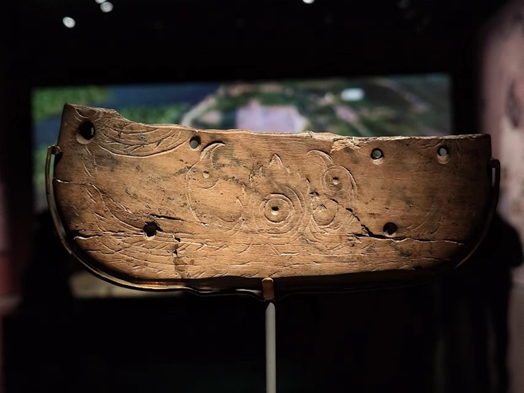
- Ivory butterfly-shaped vessel with double birds and rising sun pattern - Hemudu culture
Zhejiang Provincial Museum
Rare ivory carvings from the Neolithic Age.
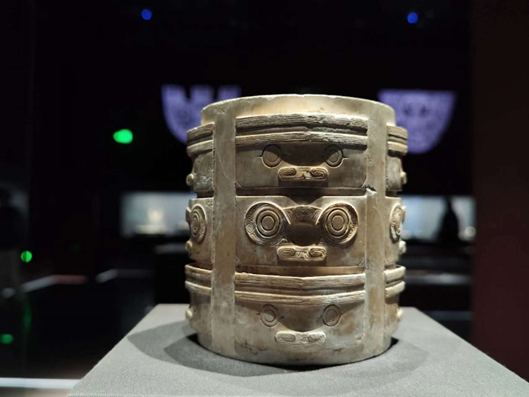
- Jade Cong - Liangzhu Culture (about 3300 BC - 2300 BC)
Zhejiang Provincial Museum
Bird-patterned jade, the jade cong is an important ritual vessel commonly seen in Liangzhu culture, symbolizing communication between man and heaven.
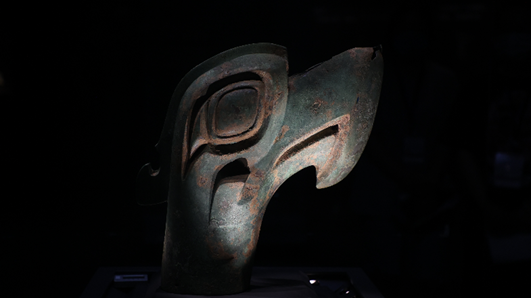
- Image of the Bird in Sanxingdui (c. 1200 BC)
Sanxingdui Museum
These birds on bronze vessels symbolize the sacredness and destiny of the ancient Shu Dynasty. As messengers of communication with the gods, birds occupy a special position in Sanxingdui civilization, showed by this artifact.
2. Bird Patterns and Bronze Wares in the Pre-Qin Period
In the Pre-Qin period, the symbolism of birds was further deepened. Bird patterns were widely used in bronze wares, ritual vessels, and architectural decorations, becoming an important symbol of royal power and religion.
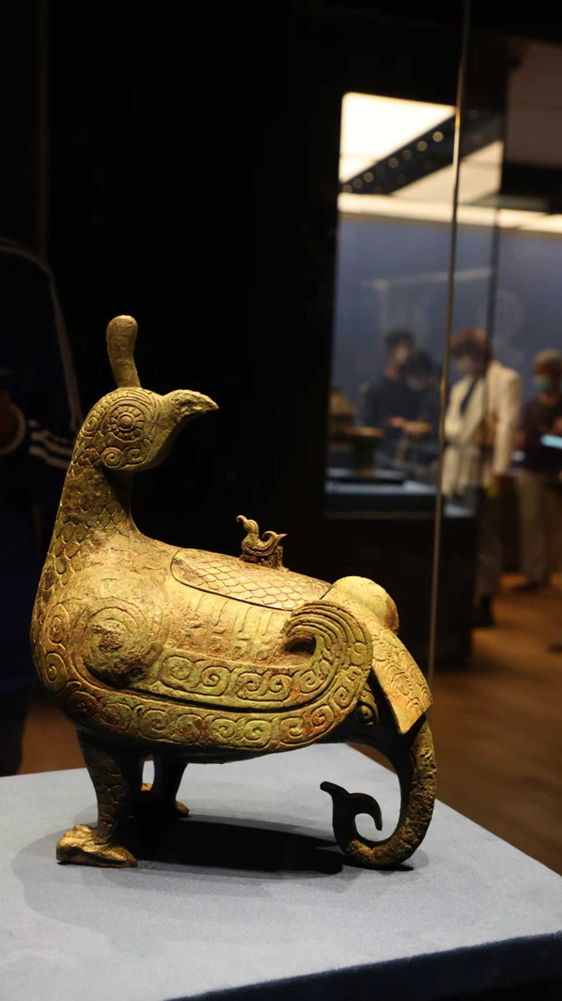
Jinhou Bird Zun - Western Zhou Dynasty (11th century BC - 771 BC)
Shanxi Provincial Museum
A ritual vessel for sacrifices in the Jinhou Temple. The design is unique, with the big bird looking back and the small bird leaning on it.
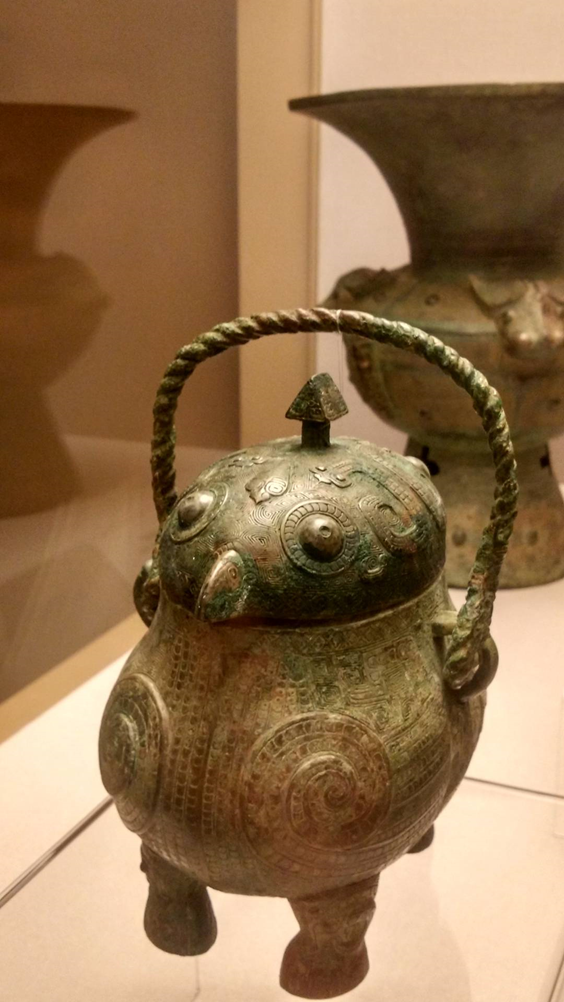
Owl-shaped You (wine vessel) with inscription “Ge”
Late Shang Dynasty (13th-11th century BC), Shanghai Museum
Owl is considered a bird with mysterious power, able to protect the home and have psychic abilities.
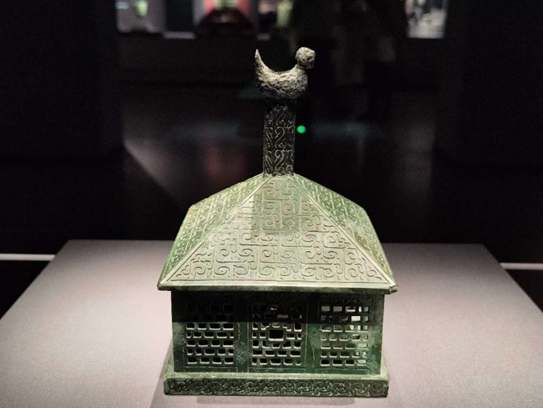
Bronze house model with figurines of dancers and musicians
Spring and Autumn Period (770-476 BC), Zhejiang Provincial Museum
A large dove is sculpted on the top of the column of the house model.
3. Han Dynasty Tombs and Bird Symbols
Murals, bronzes, and jades unearthed from Han Dynasty tombs often feature bird images, reflecting the Han people’s beliefs in soul ascension and the afterlife. In Han dynasty tomb culture, birds beared rich symbolic meanings, becoming a symbol of communication between the worlds of yin and yang.
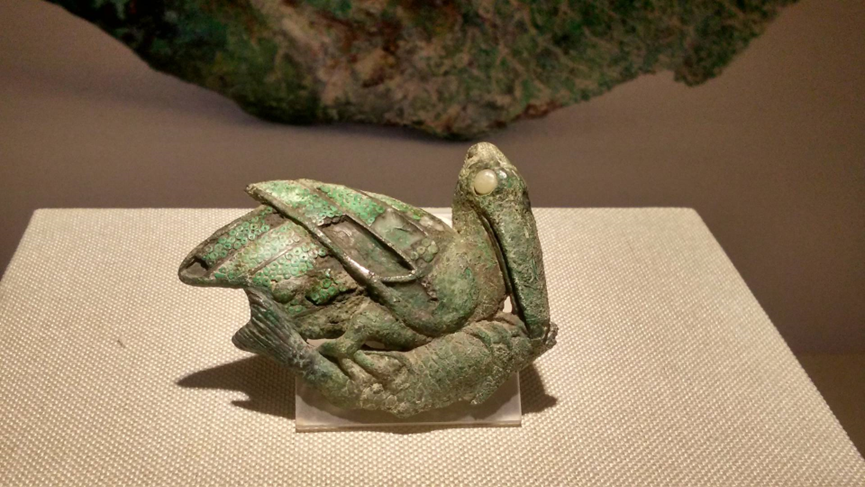
- Bronze Buckle with Figurines of Pelican Eating Fish
Yunnan Provincial Museum, Western Han Dynasty (206BC-8AD)
The pelican is catching fish, with a vivid posture and a full figure.
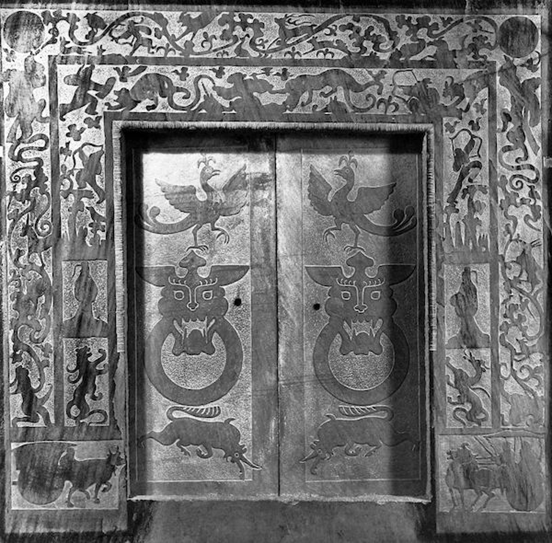
- Vermilion Bird Tomb Door Painting (Eastern Han Dynasty)
Xi’an Beilin Museum, Shaanxi Province
The image of the Vermilion Bird is often seen in tomb murals of the Han Dynasty, expressing people’s belief in the afterlife. The Vermilion Bird symbolizes the south and the afterlife, representing the sublimation and rebirth of the soul.
4. Bird Images in Tang Dynasty Art
The Tang Dynasty was a peak period of ancient Chinese culture. Bird images became more colorful, reflecting the Tang people’s love for nature, art, and life.

Bronze Mirror inlaid with Mother-of-Pearl - Tang Dynasty
National Museum of China
Decorated with flying birds and parrots, with a crane in the middle, symbolizing harmony and elegance. It is made of snail and clam shell ornaments.
5. Bird Art in the Song, Yuan, Ming, and Qing Dynasties
During these dynasties, bird images appeared widely in daily objects and artworks, especially in ceramics and painting.
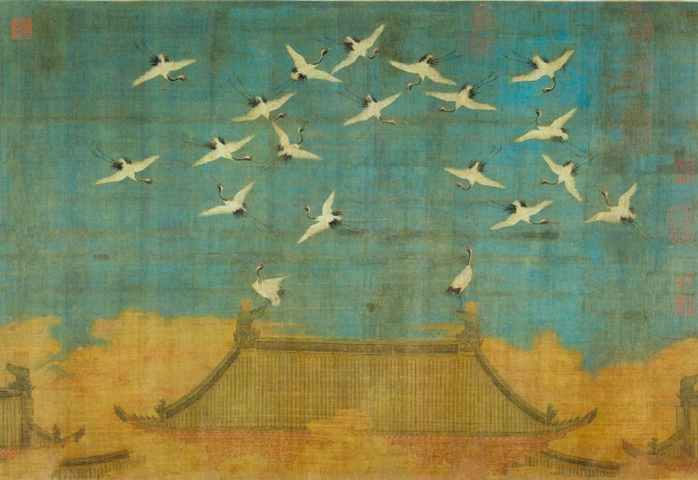
Auspicious Cranes by Emperor Huizong of Song, Zhao Ji, Northern Song Dynasty
Liaoning Provincial Museum
Depicts cranes circling above the palace in a spectacular scene with various postures.
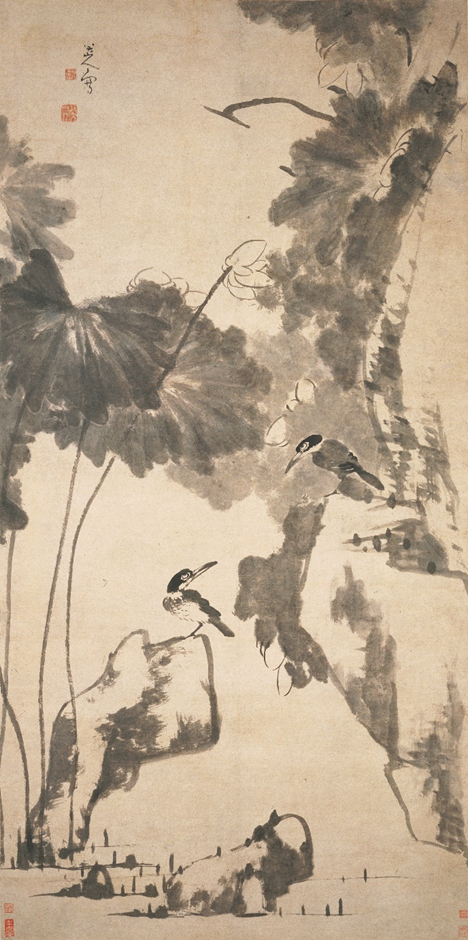
Lotus and Kingfisher Scroll, Qing Dynasty, Zhu Da
Shanghai Museum
The kingfisher playing among the lotus leaves is lively, with humorous and cute expressions.
Conclusion
Birds on various handicrafts became integrated into people’s daily lives, symbolizing connections to nature, spirituality, and harmony across Chinese history. From ancient totems and royal symbols to spiritual icons in Han tombs, birds embodied evolving beliefs, linking heaven and earth, authority, and transformation. By the Tang, Song, and later dynasties, bird imagery celebrated nature’s beauty, reflecting enduring cultural values and a profound reverence for life that shaped Chinese artistry across the ages.